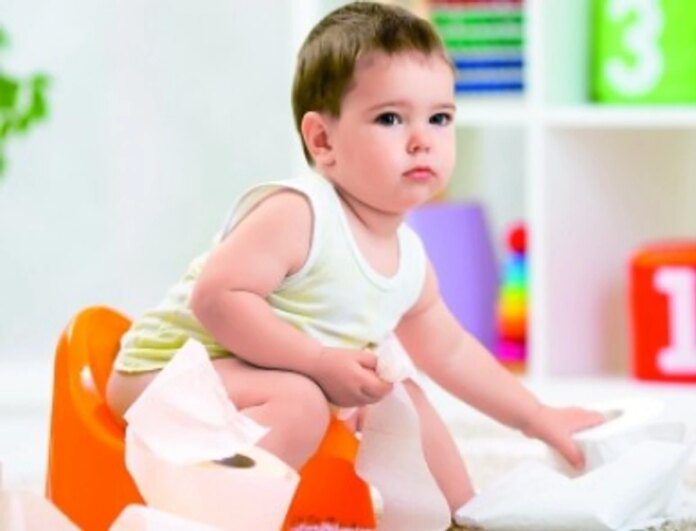
A child is considered constipated when he has less than 3 stools per week, has difficulty going to the toilet or when the stools are hard, dry and unusually large. It rarely occurs in young babies, especially those who are breastfed. This discomfort is more common in older children, once solid foods have been introduced into their diet.
Abdominal pain, among the first signs
Abdominal pain is a symptom that many children complain of and which can be attributed to constipation. The stool accumulated in the rectum can cause cramps, bloating, which disappear with defecation. A sign of concern for parents is the accumulation of stool, which ends up blocking the intestine. Therefore, constipation should not be neglected.
Choose foods rich in fiber
The key to treating constipation in children is a diet rich in fiber. Include fruits and vegetables, cereals and a lot of legumes in the child’s diet. The fruits must be eaten with the skin on. Spinach, raw carrot, tomatoes, beans, peas, corn and lentils should be included as often as possible in the child’s diet. Fibers cannot be digested, therefore, they clean the intestines by moving the food bowl more easily. A 3-year-old needs 8g of fiber daily, while a 7-year-old needs 12g.
Read also: The best sources of fiber
Careful!
Do not administer a certain treatment to the child suffering from constipation without the consent of the pediatrician.
Give him as much fluids as possible
If the child is constipated, give him as much liquid as possible. Water and natural fruit juices help the stool to move more easily through the intestines. Apple, pear or plum juice is recommended for children older than 6 months to relieve constipation, and for those over 1 year old, 2 snacks a day consisting of fruits and 3 meals of vegetables can be added to their diet.
What is the treatment?
If stool is difficult to pass, children’s glycerin suppository can be tried. Also, massage the abdomen in circular movements (clockwise). If, despite the hygiene and dietetic measures, the constipation persists, the doctor may recommend laxatives.
tips
Encourage the child to go to the toilet before leaving home (in some children, constipation is favored by the refusal to go to foreign toilets);
Bottle-fed babies are much more exposed to constipation than breast-fed babies. It is considered that cow’s milk can lead to constipation;
Chamomile tea can be used to treat constipation in children. It can also be given to babies, provided you don’t sweeten it. A few teaspoons of chamomile infusion are enough for a baby of a few months;
Sweets, likewise, can favor constipation in children. Therefore, take care that your little one does not consume them in excess;
Some medical problems can lead to constipation in children: hypothyroidism, Hirschprung’s disease, diabetes, mental retardation, cystic fibrosis, spinal cord injuries;
The child should sit with his back straight to the toilet, so that the anal canal is also straight, so that it is easier for him to push the stool out. Help him by placing a stool or riser in front of the toilet to support his feet.
Expert advice
Dr. Irina Costache, pediatric specialist, Regina Maria polyclinic, Bucharest, https://pediatricblog.info
Constipation is a common problem, affecting approximately 3% of children, 17-40% of children in the first year of life. (…)A delay in the initiation of treatment for more than 3 months correlates with prolongation of symptoms, long-term treatment, which could be avoided. Constipation is an extremely important and unpleasant problem for the patient, a correct and honest history can avoid erroneous diagnoses.






































